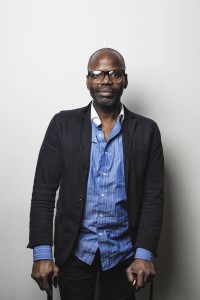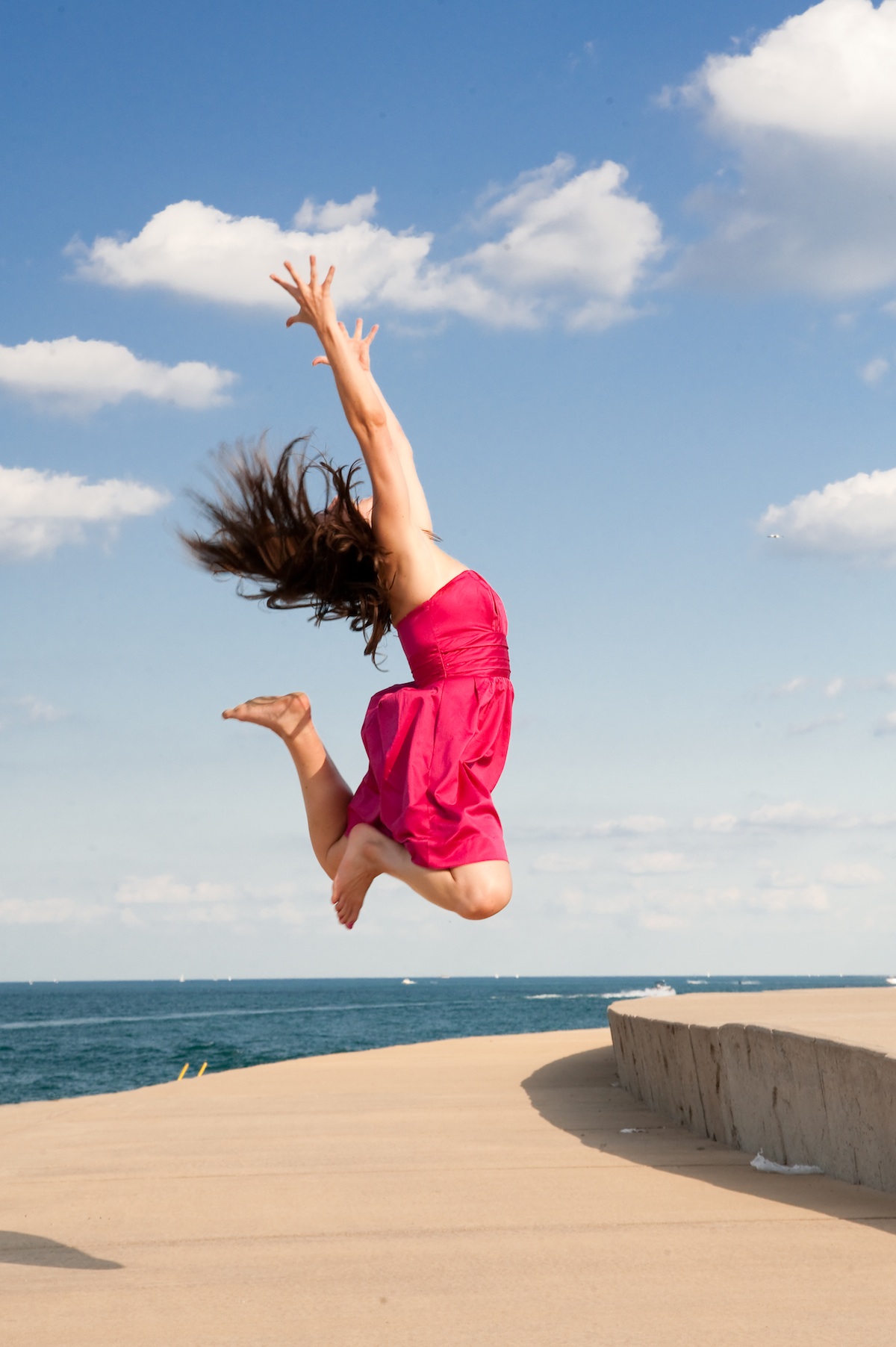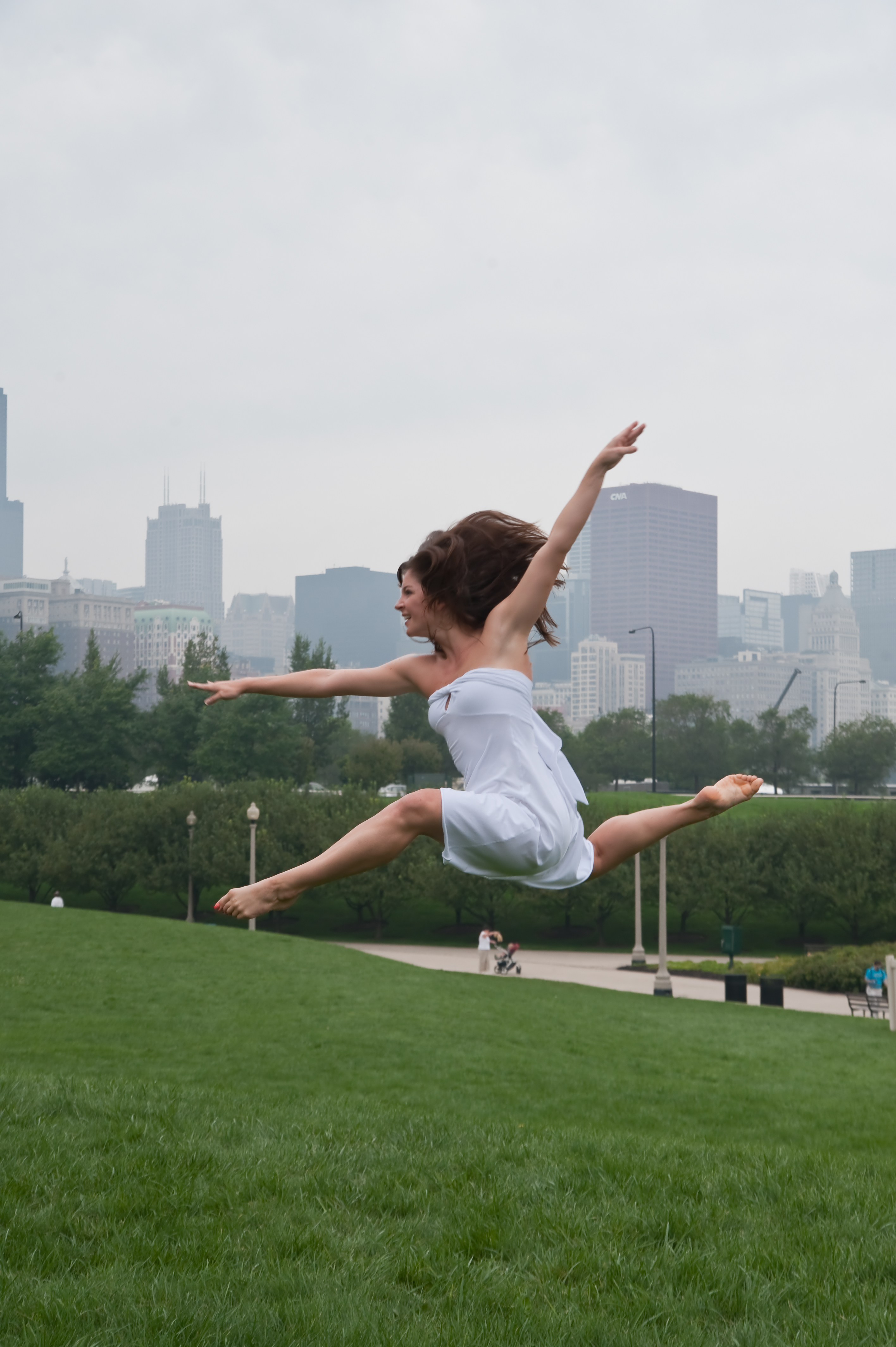 Don’t let her small stature and soft-spoken, polite nature fool you. She is highly intelligent and a fiercely passionate advocate for dance. Julie Nakagawa, Co-founder and Artistic Director of DanceWorks Chicago (DWC) and an officer on the Board of Trustees for Dance/USA, is an artist, teacher, mentor and director that focuses on nurturing not only the individual artist, but the global dance community as a whole. There is no ego here.
Don’t let her small stature and soft-spoken, polite nature fool you. She is highly intelligent and a fiercely passionate advocate for dance. Julie Nakagawa, Co-founder and Artistic Director of DanceWorks Chicago (DWC) and an officer on the Board of Trustees for Dance/USA, is an artist, teacher, mentor and director that focuses on nurturing not only the individual artist, but the global dance community as a whole. There is no ego here.
A native of Evanston, IL, Nakagawa moved away for a dance career with Off Center Ballet, Cleveland Ballet and Twyla Tharp Dance before returning to Chicago to be with Ballet Chicago dancer, husband Andreas Böttcher. “We just wanted to be in the same area code,” she says from her River North office inside the Ruth Page Center. At a crossroads in her career, a social dinner with Lou Conte offered her a surprising opportunity and she wound up managing the Lou Conte Dance Studio. More opportunities came in the form of directing the Hubbard Street Training Ensemble (now Hubbard Street 2) which she nurtured for the first decade of its existence. Böttcher joined the organization and an unstoppable team was formed. With mentors like Conte and Gail Kalver, there really wasn’t any other outcome. “That was a great place for us to learn separately and collectively and grow together,” Nakagawa says. “Those two are the best in the business.”
When it was time for them to leave the organization, they took some time off to travel and really focus on what they wanted to do. Eventually their brainchild DWC was born, which they announced at that year’s Dance/USA conference. DWC just celebrated its 4-year anniversary in June. RB sat down with Nakagawa earlier this summer to talk about DanceWorks, Dance/USA and the dance community.
How did the idea of DanceWorks Chicago come about?
The community was already showing signs of strain in resources. The most obvious resource is money, but for dance, space (which is associated with money), time (which is associated with money) and just the pressure to produce too. What seemed like a potential danger was that these young dancers that were coming up weren’t…their directors and the companies were at risk of losing the valuable time of investment. To bridge the gap between student or BFA graduate or conservatory grad or first job, second job thing, because there wasn’t an extra studio space or ballet master to kind of help you along. Or the idea that yes, we can hire a dancer that we need to put an investment year in…those things weren’t happening. Directors were saying to me that they can’t renew them because there’s some resource that they are lacking and each company handles that differently, but for the dancer that’s devastating. Psychologically, that’s devastating. You don’t get prepared for that in school. You get prepared for success, but what about the many different ways success can look? What about things that look or seem like failure, how do you turn those around? I don’t think that’s necessarily overattended to. In talking to dancers…they were the ones that said to us that it’s important. This contribution is important. The emphasis on companies is constantly to produce the dances. Our concern has always been to produce the dancers. That is the difference. And we need both. We decided to found DanceWorks Chicago to fulfill that need in the community to continue to have this laboratory or this research and development time to invest in the dancers, because a really courageous and equipped dancer can really do something in these companies. Where the companies themselves…that might not be their priority. That’s not a criticism. They need to produce dances, but the dancers need to be ready to do whatever it is they need to do to help those companies reach their goals.
We’ve been committed to 30-week contracts for the dancers annually, on salary and with health insurance. That’s been a push and will continue to be a push, but we’re committed to that because we feel that’s the right thing to do. We’re committed to building that relationship with them. To build any relationship you need time. It can’t be a two-week project and a one-week project and a gig. That’s not a relationship, that’s two projects and a gig. Again, that’s not a criticism; it’s just a different rhythm. Our rhythm needs to be that we’re with each other on a daily basis for full days (9:30 – 4:30). Time is the most precious commodity. Money, if you don’t have it or if you lose it, you can get it back. You might not, but it’s in the realm of possibility. Time, you won’t get it back. We take that very seriously. The artists’ time, the audience’s time, funders’ time…it’s really important. From little things like trying to start and end on time, to reconfiguring performances into these dance flights, which are two 45-min segments back-to-back separated by 15 minutes. That total time is like a regular performance, but the audience has more of a say in how they want to spend their time or their resources. Trying to do things like that has also been important to us, as well as this laboratory for dancers to explore who they are and test that muscle of courage. That’s a muscle that’s really, really important. Confidence besides the technical tools, the intellectual capacity and the emotional availability to really be a compelling artist. We try to give them experience so they can make the best choices. Do I want to be in a touring company? Maybe that’s not for me. If it’s not for you, then you can eliminate certain situations and save you and the company time and discomfort. It’s a broad dance world out there, but it’s got to be about the relationship and the fit. Hopefully having these experiences helps them identify a better next step, a better fit for them.
How did you get involved with Dance/USA?
When I retired from dancing, I wasn’t sure what I was going to do. It was more of a personal/professional decision. I felt I’d had a great decade-long career and felt very grateful about my career and my dancing. I enjoyed it. I still was enjoying it, but felt like I needed to make a life choice..a life change.
I talked with my director Dennis Nahad at Cleveland Ballet and he suggested I go to Dance/USA. Cleveland Ballet were a member organization. So I went (Minneapolis) and I went to the dancers forum. There was like seven of us, but it was a really great opportunity that there was a much broader dance community out there and that there were all these people working on all different levels and in all different areas. To come to a national convening was something I’d never done. It was really important. That was my first connection with Dance/USA. Then, Hubbard Street was a member organization, so I went again. There’s a lot of value in it. If you want to play on a national or international level, I think it’s a mistake to think you can do it just in your own backyard. It doesn’t really matter where your backyard is, even with the internet and technology, it’s a people business. While you can’t always jet around, you can go to Pittsburgh or Portland or…if you plan ahead, you can make that happen. Seeing who was at Dance/USA, seeing who wasn’t at Dance/USA, seeing who was making things happen for themselves…there’s definitely a connection there. The panels, the forums, the speakers, that’s all really important. The time in the elevator, the time between sessions, even lunch is equally important. There are so many connections made, deals done, business cards exchanged, synergies discovered that makes it exhausting. But hopefully you’re exhausted in the right way. We’re looking for that inside information, that extra edge. One of the first things we did as a young organization (DWC) was join it. We felt it was important. Joining Dance/USA and having 30-week contracts with insurance…it’s not the norm, but if we can do it, it can be done.
…and joining the Board?
Someone nominated me, which was very generous and gracious. I have some big shoes to fill. Eduardo Vilaro (former Artistic Director of Luna Negra, currently Artistic Director at Ballet Hispanico) was the most recent Chicago representative on the board. I think Eduardo is an example of someone who really was a great board member for Dance/USA and translated that into success for Luna Negra…and rightfully so. I was honored to accept and was subsequently nominated to be Secretary. I had to ponder that for logistical reasons. I feel it’s really important to give back.
What do you think having the conference here this summer will do for the Chicago dance community?
We’re all really excited about it coming to Chicago. It’s the center of the country, so hopefully it’s easy for everyone to get here. It would be great to have more Dance/USA members in Chicago. I think it’s such a vibrant community. Sometimes there’s a perception that there’s New York and then the rest of the country. I think that has been true. I don’t think it needs to be true. Does there need to be one destination for dance in the country? No. The math just doesn’t add up any more for lots of folks. I think Dance/USA is navigating a broad spectrum of dance in terms of their constituency and a broad geographic range on an on-going basis. I think Chicago is such a great destination for dance. If you want people to come, it’s not enough just to be here. Part of it is connecting with them where they are…it’s audience outreach. I think that one of the things is that it has provided an opportunity for the dance community to convene. As wonderfully diverse and dynamic as the community is, it’s not difficult to stay in your own area. Sometimes it’s their geographic area, sometimes their genre…whatever it is. We had a community breakfast, which drew a really great cross-section of people from the local artistic community. Artists, presenters, press, agents…it was great. The opportunity for the community is to come together around dance and around the conference and to represent Chicago. I think the challenge for the community is what’s going to happen after this? Are we all going to go back to business as usual? Your energized and refreshed, and that’s not without value, but what is tangible? That needs to be attended to. I would love to suggest a post-Dance/USA community convening to share experiences. There are so many things to select, there are so many session to attend…it might be beneficial to tag team, so you’re not all at the same meeting. Can we do that at a broader level? Can we have the community get together and share for the people that couldn’t come or selected not to come…so that they can still get something out of it. Just sit down and talk. I think that would be a great follow up. And again, I’m a believer in personal responsibility. Maybe there’s a group that wants to talk about national touring and they identify themselves at the follow-up meeting and then they start meeting bi-monthly. It would be great to have some really honest, passionate, respectful conversation.
My hope is that the Chicago community really uses this as an opportunity to really shine a light on dance in Chicago in some way. Even if they can’t be there or don’t understand, they understand that the opportunity is out there and they made a choice to attend or not to attend and they stand by that choice. We’re going to throw a big party – what’s going to happen after it? That’s the place where there’s a potential to maximize the opportunity for each individual or organization. There is a way that we can maybe do that as a community.



